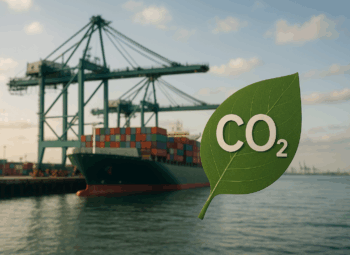Procurement and supply chain teams work under constant pressure. Geopolitics, cost volatility, and tight delivery windows strain attention and well-being. Unclear data and compliance risk add mental load and increase burnout. Leaders ask teams to do more with less while navigating complex sustainability targets. The right operating model can reduce stress. Clear data, verified suppliers, and carbon neutral strategies remove guesswork and build confidence. This article shows how global companies move to carbon neutral supply chains, and how you can apply the same steps without overloading your team.
Why Carbon Neutral Supply Chains Support Business Health and Team Well-being
The business case
Carbon neutral supply chains protect revenue and reduce risk. They defend market access and position your brand for future regulation. They also streamline decisions and support team well-being. When teams use verified data and clear playbooks, they reduce rework and avoid late-stage surprises.
- Protect access to markets with clear compliance to evolving trade rules
- Lower landed cost through energy efficiency and material optimization
- Win tenders that require carbon disclosures and reduction plans
- Reduce reputational risk with verified factories and audited materials
- Boost team morale by removing ambiguity and firefighting
Key pressures you can control
- Compliance pressure: map and document Scope 1, 2, and 3 emissions
- Data pressure: standardize carbon data capture at the supplier and part level
- Time pressure: automate factory verification and document collection
- Change pressure: phase decarbonization with pilots, not big-bang programs
Research Output ID: -1757310020
Case Studies: Global Companies Going Carbon Neutral
Apple: supplier clean energy and Scope 3 focus
Apple moved suppliers to renewable electricity and built supplier scorecards that link awards to carbon progress. Apple set clear supplier expectations and offered tools to procure renewable energy. Apple integrated carbon into product design and packaging.
- What to apply: add renewable energy adoption to sourcing criteria
- How to start: run a pilot with your top ten suppliers by spend or emissions
- Benefit: measurable Scope 3 reduction tied to real contracts
Maersk: green fuels and logistics switching
Maersk invested in methanol-enabled vessels and booked green fuel offtake. Shippers now buy low carbon ocean options and track emissions per lane. This approach aligns procurement, operations, and customer teams around shared carbon math.
- What to apply: switch trade lanes to lower carbon carriers where service fits
- How to start: model two to three lanes and compare carbon and cost
- Benefit: fast emission cuts from logistics without redesigning products
Unilever: supplier engagement and product reformulation
Unilever set supplier benchmarks and embedded climate requirements into contracts. Teams reformulated products to use lower carbon inputs and packaging. The company uses credible disclosure and pushes transparency through the chain.
- What to apply: include carbon intensity and data quality in supplier KPIs
- How to start: prioritise top categories by carbon impact and margin
- Benefit: aligns procurement and R&D on both cost and carbon
IKEA: materials, design for circularity, and renewable heat
IKEA reduced emissions with wood and fabric sourcing, low carbon steel, and design that enables reuse. IKEA shifted factories toward renewable heat and energy efficiency. The company aligned supplier financing with upgrades.
- What to apply: target high-impact materials with verified low carbon options
- How to start: run material substitution pilots in one product line
- Benefit: low carbon products at scale with stable costs
Schneider Electric: supplier decarbonization coalition
Schneider launched a supplier coalition that shares tools, training, and financing options for energy upgrades. Suppliers report progress against a standard playbook. The coalition approach builds capacity and reduces duplication.
- What to apply: create a supplier program with shared templates and training
- How to start: issue a clear playbook and run joint workshops by region
- Benefit: faster progress with consistent data and lower change fatigue
Build Your Carbon Neutral Supply Chain: A Five-Step Playbook
Step 1: Baseline and prioritize
Start with a credible baseline. Focus on the categories that drive most of your Scope 3 emissions. Use primary data where you can, and use reliable secondary data where gaps exist.
- Map emissions by category, supplier, and part number
- Rank by carbon impact, spend, and risk to revenue
- Set clear targets for each priority category
Step 2: Verify factories and materials
Verification reduces compliance risk and gives your team confidence. Use standard audits and technology to capture evidence.
- Run factory verification for legal status, labor, environment, and capacity
- Confirm energy sources, boiler types, and process heat intensity
- Verify material certificates and chain of custody for recycled inputs
Step 3: Source smarter, not harder
Shift awards to suppliers that deliver both cost and carbon wins. Use dual criteria and fixed data formats in RFQs.
- Include carbon intensity and data quality in price comparisons
- Offer longer terms for suppliers who commit to specific carbon projects
- Bundle lanes and categories to unlock scale for renewable energy
Step 4: Decarbonize logistics and packaging
Logistics changes deliver fast wins. Packaging optimization removes weight and waste.
- Switch to low carbon ocean services and rail where lead time allows
- Use co-loading and dynamic routing to lift load factors
- Reduce packaging weight and increase recycled content with verified specs
Step 5: Optimize production
Process improvements cut cost and carbon together. Focus on energy intensity, yield, and scrap.
- Run energy audits and install meters at high-load processes
- Shift to renewable electricity via PPAs or green tariffs
- Replace high carbon heat sources with electric or biomass options where feasible
Compliance, Import and Export, and Documentation You Can Trust
Prepare for evolving rules
Trade and product rules change fast. Your compliance plan must match that pace. Align procurement, legal, and logistics teams on a single document set.
- Map exposure to CBAM, EUDR, UFLPA, and extended producer rules
- Collect evidence at the supplier and sub-tier level
- Assign an owner for each regulation and each high-risk product
Standardize your factory verification program
Use one playbook for every site. Keep the scope clear and repeatable.
- Legal registration, tax, and banking verification
- Labor, safety, environment, and capacity checks
- Energy mix, emissions reporting, and renewable projects
- Product testing, material traceability, and packaging specs
Lock in import and export readiness
Clean documentation keeps shipments moving. Digital records reduce errors and stress.
- Harmonized System code accuracy with evidence
- Certificates of origin, test reports, and product labels
- Supplier declarations for materials and chemicals
- End-to-end audit trail tied to each purchase order
Construction Material Sourcing: Cut Carbon Without Delays
Focus on high-impact materials
Construction projects face tough targets and tight schedules. You can cut embodied carbon while hitting milestones when you plan material choices early.
- Cement and concrete: specify blends with supplementary cementitious materials
- Steel: source from electric arc furnace with scrap content
- Glass and aluminum: require verified recycled content and low carbon power
- Insulation and finishes: select products with verified environmental labels
Keep procurement, design, and site teams aligned
Early alignment prevents redesign and change orders. Use one bill of materials for cost and carbon.
- Lock target carbon intensity per material at concept stage
- Solicit alternate bids that meet mechanical and code requirements
- Secure lead times and logistics for low carbon batches
Verify suppliers and track chain of custody
Material claims need evidence. Verification protects your project and your client relationship.
- Collect mill test certificates and environmental product declarations
- Use site delivery checks to match documents to actual lots
- Record all data in your project quality system for audits
Operating Model: Data, Governance, and People
Build the data foundation
Data discipline reduces anxiety and speeds decisions. Use templates and standard fields.
- Set a single taxonomy for suppliers, parts, lanes, and materials
- Capture carbon data with data quality scores
- Use version control so teams trust the latest file
Governance that accelerates action
Clear rules help teams act without delay. Tie decisions to thresholds and playbooks.
- Approve sourcing awards when suppliers meet carbon and compliance gates
- Trigger executive review only for high-risk exceptions
- Publish a change calendar to coordinate with finance and operations
Support your people
Teams do better when leaders remove noise. Invest in tools and workload balance.
- Automate document collection and status alerts
- Rotate complex categories to avoid burnout
- Set weekly sprints with clear priorities and limits
What The Prime Sourcing Delivers
International sourcing and factory verification
- Supplier discovery, screening, and on-site verification
- Compliance-ready document packs and audit programs
- Contract terms that align cost, delivery, and carbon
Carbon neutral supply chain design
- Category-level carbon baselines and roadmaps
- Supplier coalitions and renewable energy programs
- Logistics decarbonization and packaging optimization
Import and export excellence
- Regulatory mapping and risk controls by market
- Tariff classification, origin management, and labeling
- End-to-end documentation connected to purchase orders
Production optimization
- Energy and yield improvements that cut cost and carbon
- Material substitution with verified low carbon options
- Process heat transitions and on-site metering plans
Construction material sourcing
- Low carbon steel, cement, glass, and aluminum sourcing
- Chain of custody verification and site delivery checks
- Project-aligned logistics and schedule protection
Action Plan You Can Start This Quarter
Week 1 to 2: focus and baseline
- Pick top five categories by emissions and margin
- Confirm current data and fill gaps with reliable sources
- Set targets and assign owners
Week 3 to 6: verify and pilot
- Run factory verification for priority suppliers
- Issue RFQs with dual criteria for price and carbon
- Switch two trade lanes to low carbon logistics
Week 7 to 12: scale and lock governance
- Launch supplier training and document templates
- Sign renewable energy deals or certificates for key sites
- Publish a quarterly carbon and compliance dashboard
Conclusion and Next Steps
Carbon neutral supply chains make business sense and help your team. Case studies show that clear targets, supplier engagement, and verified data produce results. You can start with a focused baseline, visible pilots, and fast wins in logistics and materials. Then you can scale with a standard playbook and consistent governance.
The Prime Sourcing supports international sourcing, carbon neutral roadmaps, factory verification, import and export compliance, production optimization, and construction material sourcing. We align real operations with credible evidence so you move fast and stay compliant.
Speak with our team to map your first three moves and remove noise from your pipeline. Move now and protect both revenue and people.






